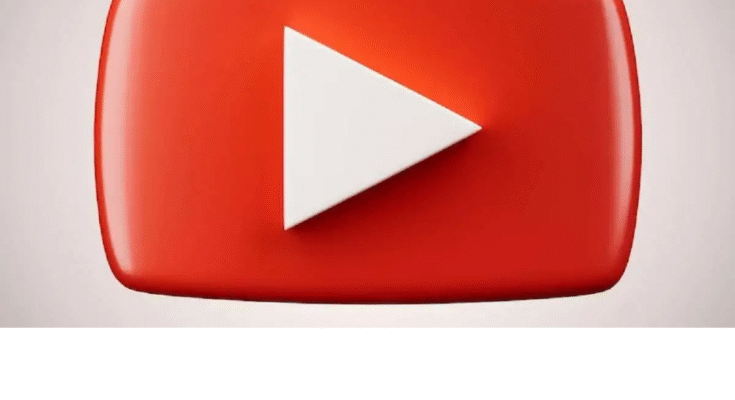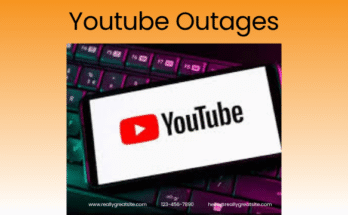YouTube.com: Revolutionizing the World of Online Video:
YouTube.com is one of the most influential platforms on the internet, transforming how people create, share, and consume video content. Launched in 2005, YouTube has grown from a simple video-sharing website into a massive global community and a major player in entertainment, education, and digital marketing. Owned by Google since 2006, YouTube stands as the second most visited website in the world, right after Google itself. With billions of users across the globe, it continues to redefine media consumption in the digital age.
The Beginning of YouTube:
The idea for YouTube emerged when the founders struggled to share video clips online. At that time, uploading and distributing video content was difficult due to technical limitations. The trio envisioned a platform where users could easily upload, view, and share videos with anyone, anywhere in the world.
It was a simple 18-second clip, but it marked the beginning of a new era of online communication. Within months, YouTube began to attract millions of viewers daily, thanks to its simple interface and the growing popularity of video blogs, music clips, and viral content.
Acquisition by Google:
In November 2006, Google acquired YouTube for $1.65 billion in stock. The merger also integrated YouTube with Google’s advertising platform, paving the way for monetization opportunities that benefited both creators and advertisers.
Features and Functionality:
YouTube offers a wide range of features that make it one of the most user-friendly and engaging platforms. Users can upload videos, subscribe to channels, leave comments, create playlists, and share videos on social media. The platform supports videos in multiple formats and resolutions, from standard definition to 4K and even 8K quality.
![]()
Over time, YouTube has introduced several new features:
YouTube Channels: Each user can create their own channel to showcase videos, gain subscribers, and build a personal or brand identity.
YouTube Shorts: A feature introduced to compete with TikTok, allowing users to upload short, vertical videos of up to 60 seconds.
YouTube Live: Enables creators to stream live events, discussions, or gaming sessions, connecting with their audience in real time.
YouTube Premium: A paid subscription service offering ad-free viewing, background play, and access to YouTube Music.
YouTube Studio: A comprehensive dashboard for creators to manage their content, analyze performance metrics, and monetize videos.
Rise of the YouTube Creator Economy:
One of the biggest revolutions YouTube brought to the internet is the concept of the “creator economy.” With YouTube’s Partner Program, launched in 2007, creators could earn money through ads placed on their videos. This incentive transformed YouTube into a career platform where people could make a living by producing quality content.
From vloggers and gamers to educators and musicians, millions of creators have found success on YouTube. Popular creators like PewDiePie, MrBeast, and T-Series have accumulated billions of views and millions of subscribers. MrBeast, for example, is known for his high-budget challenges and philanthropy videos, while T-Series represents the dominance of Indian music and entertainment on the platform.

YouTube as a Learning Platform:
Beyond entertainment, YouTube has become a global hub for education and skill development. Thousands of educational channels provide tutorials, lectures, and how-to videos for free. From learning mathematics and programming to cooking and language skills, YouTube serves as a digital classroom for millions of learners around the world. Channels like Khan Academy, TED-Ed, and CrashCourse have made education more accessible and interactive.
For more info: https://www.youtube.com/channel/UCqVDpXKLmKeBU_yyt_QkItQ
YouTube’s Role in Entertainment and Media:
YouTube has also reshaped the entertainment industry. Musicians, filmmakers, comedians, and artists use YouTube to reach audiences directly, bypassing traditional media channels. Music videos by top artists like Taylor Swift, BTS, and Bad Bunny regularly break viewership records. Additionally, YouTube has become a launchpad for independent artists who may not have access to traditional media or record labels.
Monetization and Advertising:
YouTube’s advertising model is one of its strongest revenue sources. Brands use YouTube Ads to reach targeted audiences through pre-roll, mid-roll, and display ads. For creators, monetization comes from multiple sources—ad revenue, memberships, Super Chats during live streams, and sponsorships. YouTube also introduced YouTube Partner Program (YPP) updates that allow creators to earn from Shorts and channel memberships, expanding opportunities for income generation.
Challenges and Controversies:
Despite its success, YouTube has faced several challenges. Issues such as copyright infringement, misinformation, and inappropriate content moderation have sparked debates about online responsibility. The platform has implemented community guidelines, age restrictions, and demonetization policies to address such problems.
Click Here: https://www.youtube.com/user/YouTube
Impact on Global Culture:
YouTube’s impact on global culture is undeniable. It has created new forms of communication and entertainment, turning ordinary people into global influencers. Viral trends, memes, and social movements often begin on YouTube before spreading to other platforms. The platform has democratized content creation—anyone with a smartphone and an internet connection can share their ideas and reach millions.
In many countries, YouTube is also a tool for social change. Activists, educators, and journalists use the platform to raise awareness about important issues. During crises or movements, YouTube has served as a vital medium for spreading information and mobilizing communities.
The Future of YouTube:
Looking ahead, YouTube continues to evolve with emerging technologies like artificial intelligence, augmented reality, and virtual reality. Personalized recommendations, AI-based editing tools, and enhanced viewer experiences are shaping the platform’s future. YouTube is also focusing on short-form content and live streaming, catering to the new generation of mobile-first users.
Conclusion:
YouTube.com is not just a website—it is a cultural phenomenon that has changed how the world watches and shares videos. From its humble beginnings to becoming a global powerhouse, YouTube continues to empower creativity, knowledge, and connection. Whether for entertainment, education, or inspiration, YouTube stands as a symbol of the digital revolution, shaping the way people communicate and learn in the 21st century.


